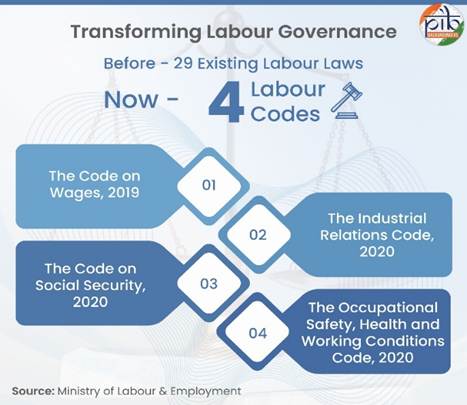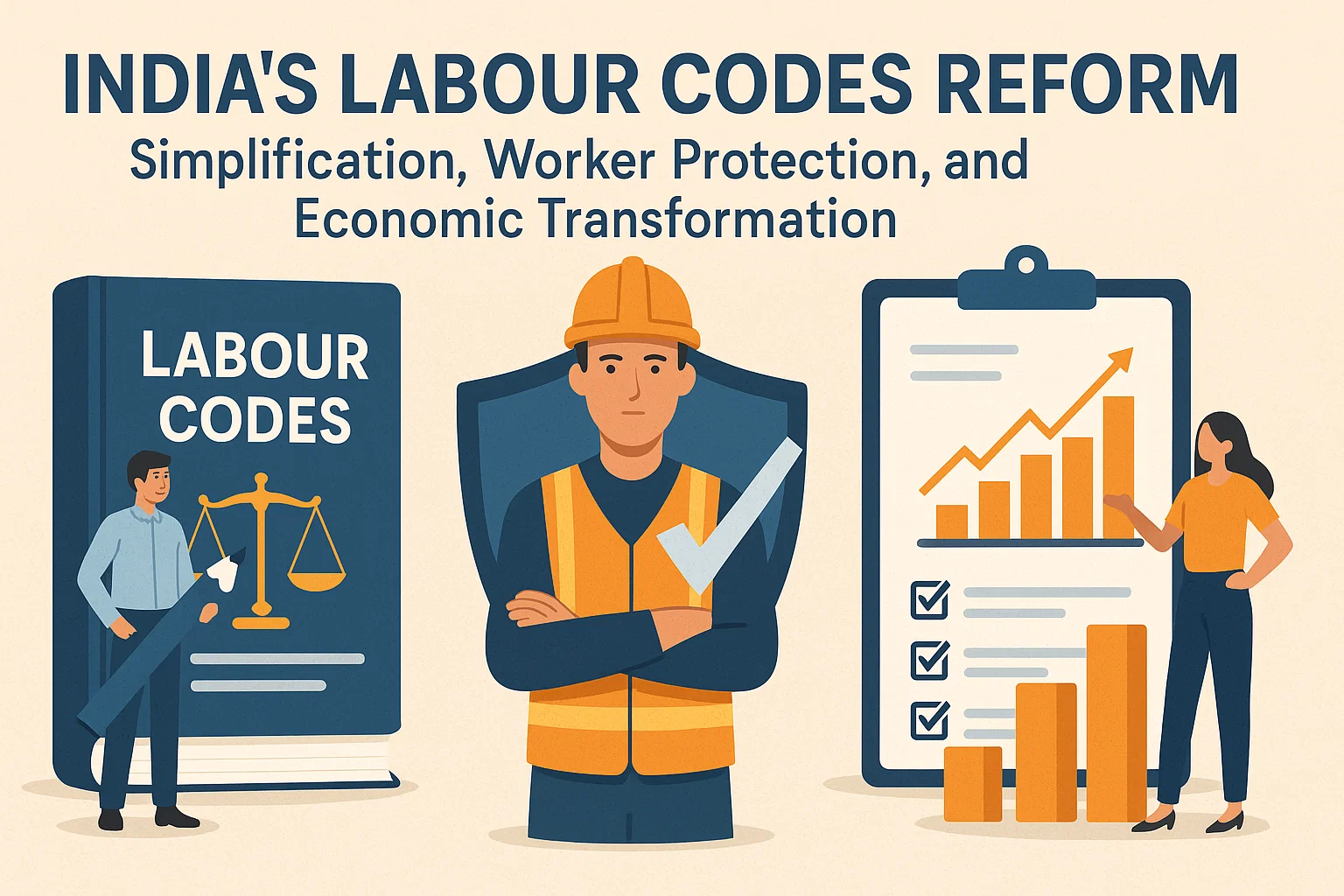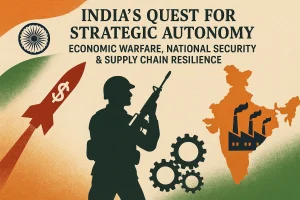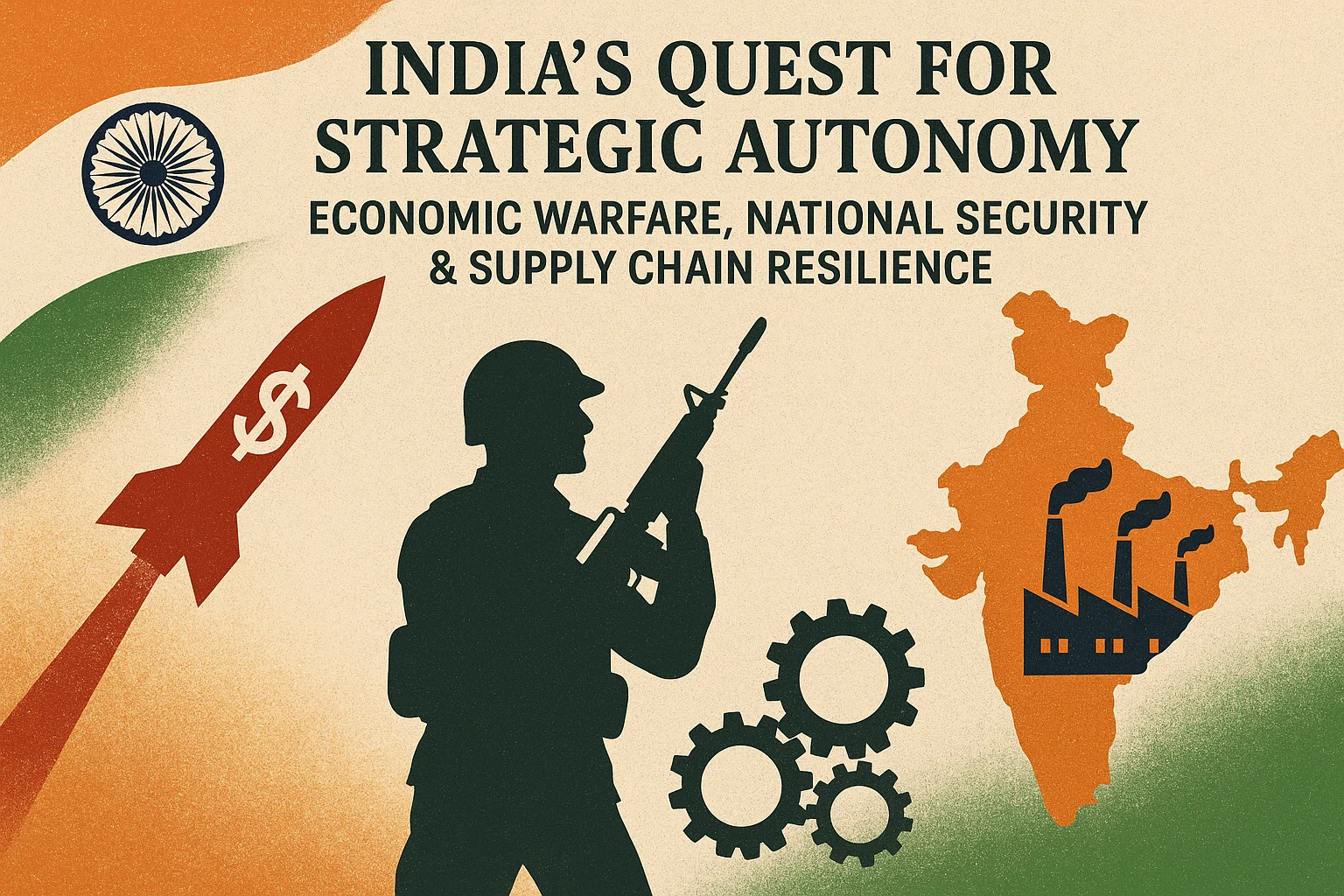Font size:
Print
India’s Labour Codes Reform: Simplification, Worker Protection, and Economic Transformation
Explore how India’s four Labour Codes—Wages, Industrial Relations, Social Security, and OSHWC—simplify 29 labour laws, promote formalisation, expand social security to gig workers, boost manufacturing, and strengthen ease of doing business. Learn how these reforms aim to improve worker protection and fuel India’s economic growth.
India’s Labour Codes Reform
With the government moving to merge 29 separate labour laws into four unified labour codes, India is undertaking one of its most significant regulatory overhauls in decades.
What are the major reasons behind weak labour rights since Independence?
- Fragmented Legal Architecture: India inherited a patchwork of laws—29 central labour legislations created across different decades and political contexts. Overlaps, ambiguities, and contradictory provisions created compliance burdens and weakened enforceability.
- Persistent Informality: With over 85–90% of India’s workforce in the informal sector(Periodic Labour Force Survey, PLFS), formal labour protections reach only a small minority. Informality is not just economic but cultural, driven by low literacy, weak bargaining power, and customary workplace practices.
- Dual Labour Market Structure: A small segment in the organised sector enjoys rigid protections (e.g., Industrial Disputes Act), while the vast unorganised workforce remains outside any safety net. This dualism discouraged formalisation and hindered productivity.
- Weak Enforcement Capacity: Labour inspectors were too few, states under-resourced, and inspection mechanisms often adversarial—breeding discretion and compliance evasion.

What efforts have been taken to address these challenges?
- Judicial & Institutional Reforms: Courts have expanded protections for dignity and safe workplaces—e.g., Vishaka Guidelines (1997) leading to the Sexual Harassment Act, 2013.
- Policy-Level Push for Formalisation
-
-
- EPFO and ESIC expansion, especially post-2015.
- Pradhan Mantri Shram-Yogi Maandhan (PM-SYM) for unorganised workers.
- e-Shram Portal (2021) registering over 29 crore workers for portability of benefits.
-
- Technological Integration: Digitisation of compliance under the Shram Suvidha Portal simplified return filing and improved transparency.
- Consolidation of Labour Laws: The most significant step is the codification of 29 laws into four Labour Codes, representing India’s largest labour reform in decades.
What are the Labour Codes?
- Code on Wages, 2019 – universalises minimum wages, provides for a national floor wage, promotes gender parity in remuneration.
- Industrial Relations Code, 2020 – governs trade unions, industrial disputes, and hiring-firing norms with provisions for fixed-term employment.
- Code on Social Security, 2020 – expands social security to gig, platform, and unorganised workers, consolidates EPF, ESI, maternity benefits etc.
- Occupational Safety, Health and Working Conditions (OSHWC) Code, 2020 – standardises workplace safety norms across sectors and introduces single licence/registration for multiple establishments.
Why have they been brought?
- To Simplify and Harmonise Labour Regulation: The earlier system resembled a “disordered palimpsest” with contradictions. Codification ensures single registration, single return, single licence, reducing compliance costs.
- To Promote Formalisation: According to provisional MoL&E–KLEMS estimates, employment grew from ~47.5 crore (2017-18) to ~64 crore (2023-24), reflecting structural shifts. Codes aim to further accelerate this transition by bringing informal workers into the protection net.
- To Include New Forms of Work: Gig and platform workers—nearly 80 lakh in India (NITI Aayog, 2022)—were earlier outside formal social security. The Social Security Code integrates them through dedicated welfare funds.
- To Shift from Adversarial to Facilitative Governance: The “inspector-cum-facilitator” model encourages compliance, reduces discretion, and aligns with global best practices.
- To Attract Investment and Improve Ease of Doing Business: Rigid separation between labour-capital interests had stalled labour-intensive manufacturing. A coherent framework signals predictability to investors.
How can the Codes bolster India’s economic engine?
- Boosting Labour-Intensive Manufacturing: Sectors like garments, electronics, toys, and food processing—critical to job creation—benefit from reduced compliance complexity and flexible hiring norms (e.g., fixed-term contracts).
- Enhancing Productivity and Mobility: Universal wage definitions, worker portability, and safety standards improve worker stability and productivity. This aligns with Economic Survey 2019–20, which noted that rigid regulations reduce firm size and productivity.
- Strengthening Social Protection: Integrating gig/platform and migrant workers into social security improves resilience and reduces poverty vulnerability—supporting a stable consumer base for the economy.
- Encouraging Formalisation of MSMEs: MSMEs generate ~30% of India’s GDP and ~45% of exports. Registration simplification and digital compliance reduce transaction costs and encourage formal job creation.
- Supporting Global Value Chain Integration: Stable, transparent labour regulation is a prerequisite for participation in GVCs—especially in textiles, electronics, and automotive components.
Subscribe to our Youtube Channel for more Valuable Content – TheStudyias
Download the App to Subscribe to our Courses – Thestudyias
The Source’s Authority and Ownership of the Article is Claimed By THE STUDY IAS BY MANIKANT SINGH




